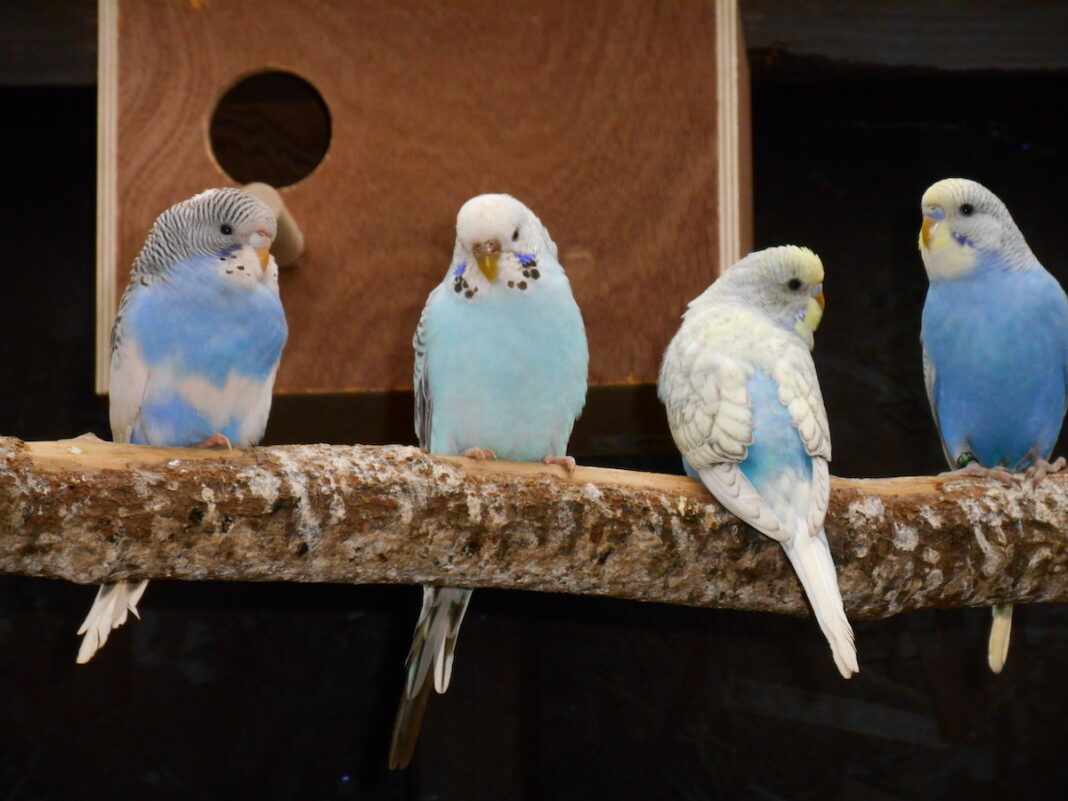Few things in birdkeeping bring more pleasure than a breeding colony of budgies, says CHRIS GREEN. You don’t need to impose many ‘rules’ in your establishment – but if you stick to these basic guidelines then sweetness and light shouldn’t be far away
WHEN it comes to choosing pet birds, budgerigars are rightly top of the list in the popularity stakes. Full of personality, colour and antics, pet-type budgerigars can offer hours of amusement each day when housed in a garden aviary.
If you are starting out with your first budgie aviary, there are a few points to bear in mind. As with any other birds, the aviary should be secure and protect them from the elements as well as from rodents and predators. What’s called for is a long flight area that allows plenty of flying space and plenty of varied perching at either end. When not flying to and fro, the budgies will take great delight in investigating and chewing these perches. Of course, they won’t reserve their attention for perches, either, so if the aviary is built of timber then it is a good idea to protect any exposed woodwork. Another good idea is to double-wire the aviary. This will reduce structural damage and provide a protective barrier if a hawk or cat should try to attack. Providing an enclosed shelter is sensible and will offer the birds both a roost and a feeding station.
If you keep a colony of budgerigars where the sexes are mixed, inevitably they will want to do what other birds and bees do. Allowing your budgerigars to breed adds an additional element to your hobby and increases the range of behaviours that you will be able to observe in the aviary, as your birds display in their courtship rituals and set about raising a family.
The nesting buzz
Colony breeding is arguably the most natural system for many birds and for budgerigars in particular, given that they live and breed in large flocks in their native Australia and are social by nature.
In a colony-breeding setup, birds can interact as they please and choose their own mates. This can lead to stronger pair bonds and more successful breeding results. Furthermore, the presence of other breeding pairs in the colony can stimulate hormonal changes that increase the fertility of individual pairs. Since budgerigars are such social birds, it may well be that a colony provides the maximum stimulus and enrichment, which is beneficial to their mental well-being.
On a practical note, colony-breeding can take up less space than selective breeding, for which numerous individual cages have to be accommodated and serviced.
However, even social creatures can have fallings-out and colony breeding isn’t always plain sailing. Territorial disputes can occur, which in a worst-case scenario can lead to eggs being damaged and chick losses. To avoid the problems and give your birds the best chance of success, try to follow some of these rules:
■ The aviary must be big enough to accommodate both the starter flock and the youngsters that are produced during the breeding season. This will allow adequate exercise for all the birds, and also give them all enough space to call their own. In turn, that will reduce aggression from the outset and allow enough escape space for individuals should any bickering occur.
■ Three pairs of birds is a good number for a starter flock. Although aviary/pet-type budgerigars can be spilt for numerous mutations, if you have favourite colours, then try to start with these from the outset. Perhaps consider only keeping those varieties, or else varieties that when combined produce the birds you are aiming for. However, in reality this can be a hard system to maintain and one of the joys of free-breeding budgerigars is in seeing the variety of different colours and markings that the chicks produced can display.
■ You should provide 50 per cent more nest-boxes than the pairs you have, to give them plenty of choice. It is important that boxes should be hung as high in the aviary as possible and all at the same height. Out of preference, birds will usually pick the highest point for nesting, so if they are all equal there will be less argument. Some hens will fight to the death over specific nest-boxes, so it is worth removing the problem.
■ If you place the boxes on shelves that will help to achieve the same-height rule and also makes it easier for you to inspect the boxes to check that all is well with the chicks inside.
Chris Green is a professional birdkeeper at Cotswold Wildlife Park, as well as a breeder/exhibitor of budgies and other cage birds.
Find more news and articles like this on the Cage & Aviary Birds website. Subscribe to Cage & Aviary Birds magazine now.


